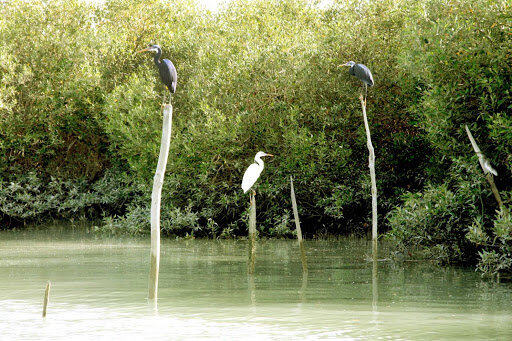Persian Gulf ‘aquatic kindergarten’ seeking UNESCO inclusion

TEHRAN – Khorkhoran Wetland, one of the largest and most important marine environments in Iran that is regarded as an aquatic kindergarten in the Persian Gulf has been waiting to be included in the UNESCO list for three years.
Stretching to over 102,000 hectares, the wetland is located in Bandar Khamir in southern Hormozgan province, which was designated a Ramsar site in 1975.
Ramsar Wetlands are sites inscribed on the List of Wetlands of International Importance (the "Ramsar List") under the Convention on Wetlands.
The city of Bandar Khamir has also joined the UNESCO Network of Learning Cities this week, according to UNESCO, and received a certificate of membership in the network.
The international and protected wetland of Khorkhoran has long been of special importance to the people as well as the environmental officials.
In 2018, Bandar Khamir got the international accreditation to be a Ramsar wetland city.
An event held on World Wetlands Day in Bandar Khamir, with the participation of local communities and NGOs, and in collaboration with the Conservation of Iranian Wetlands Project.
The event included the opening of CEPA (the Ramsar Convention’s program on Communication, Capacity-building, Education, Participation, and Awareness), to facilitate the international accreditation of Bandar Khamir as a Ramsar wetland city.
According to the announcement of the Hormozgan department of environment, Khorkhoran is known as the largest wetland in the province and even in the south of Iran. Therefore, over the past three years, its global registration has been in the focus of the attention of environmental officials at the national and international levels, as well as UNESCO.
Khorkhoran wetland hosting different species of aquatic animals and migratory birds, numerous islands and waterways as well as mangrove forests created a unique ecosystem for tourism.
This biosphere is as important that its extinction actually affects up to a billion lives.
Bing, a nationally-protected area, the wetland is home to 200 species of migratory birds from different regions of the world.
Wetlands are ecosystems saturated with water, either seasonally or permanently. They store water and ensure its quality, providing resilience against drought. They play a central role in sustainable development by supplying all our freshwater.
Wetlands play a major role in protecting the land against floods and the impacts of storms. They provide food and diverse habitats which support genetic, species, and ecosystem biodiversity. Wetlands play a key role in the life cycles of many species and in annual migration patterns.
Unfortunately, wetlands are being degraded and lost due to pollution, overexploitation, climate change, and human population growth. In recognition of these challenges, the RAMSAR Convention, an international treaty, was adopted in 1971.
FB/MG
